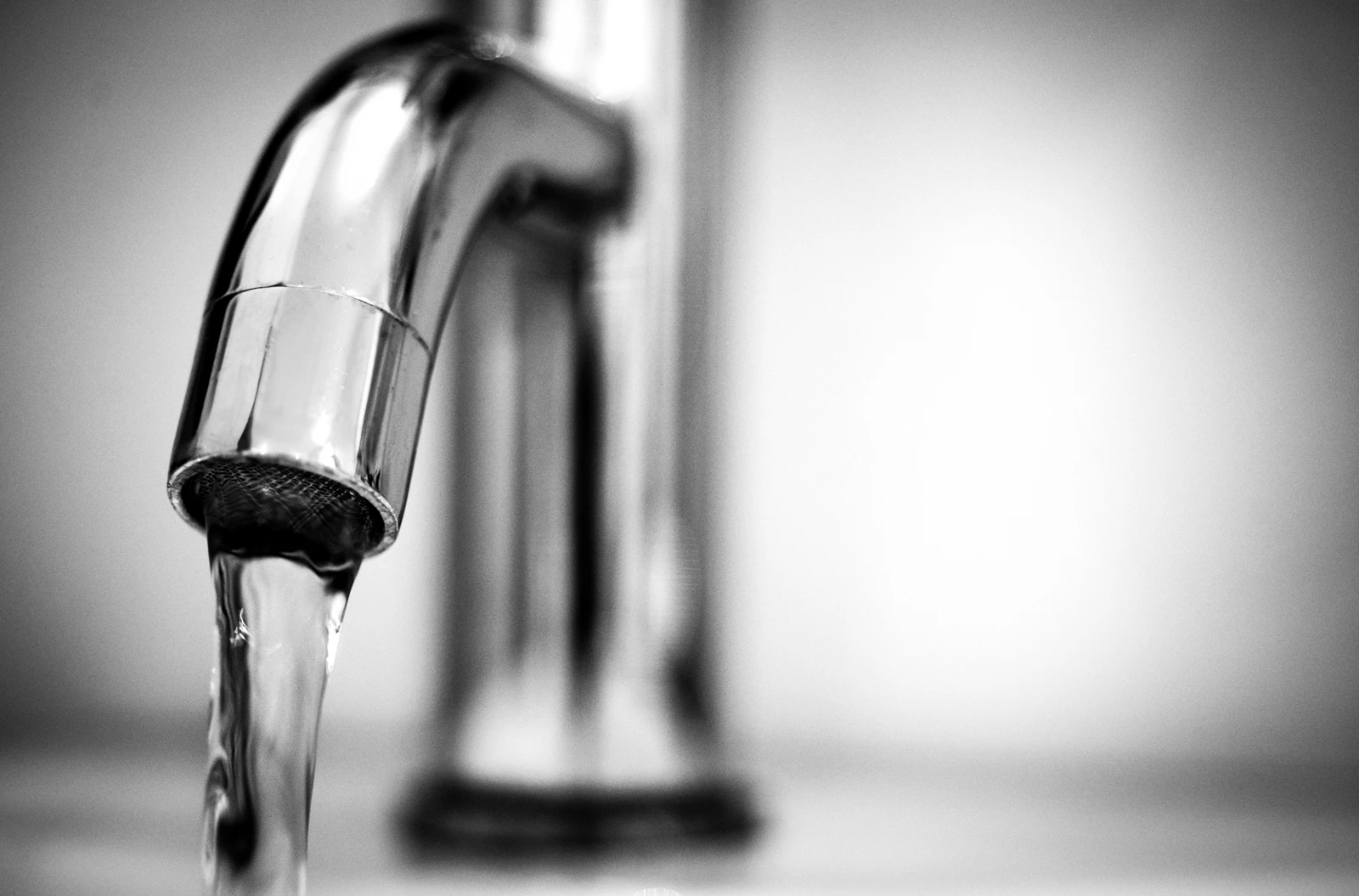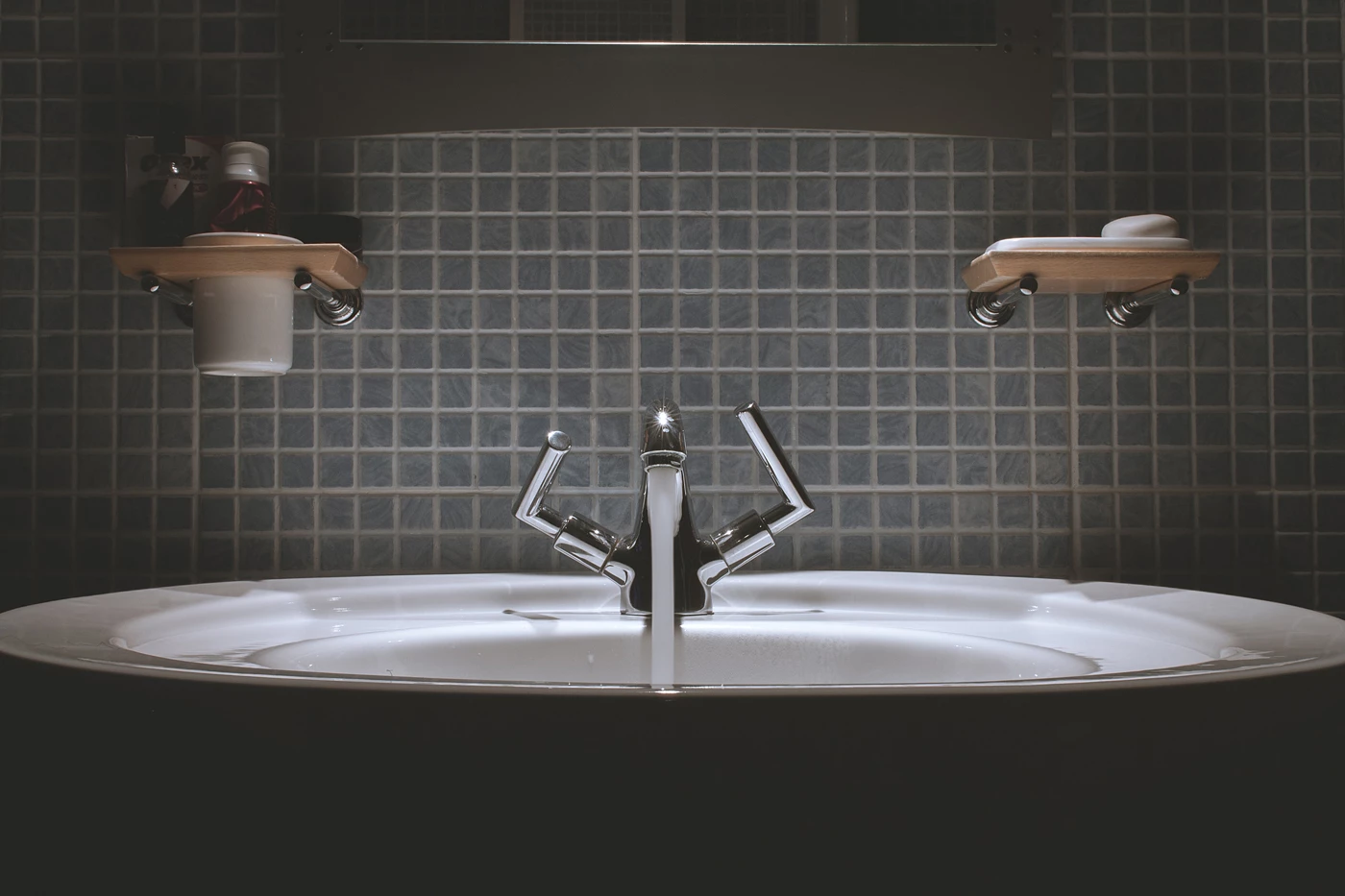30/07/2020 | Category: Commercial Insurance

As a landlord, it doesn’t matter how many properties you have in your portfolio, you want to make sure every single one is protected. After all, each property – whether a single occupancy house or apartment, HMO or commercial building – represents a significant and valuable asset. And these assets might, one day, help to fund your dream retirement, or your children through university.
When it comes to the rental market, landlords have to have a lot of faith and trust that people will take good care of their property throughout the duration of each tenancy.
That means abiding by the terms and conditions of the tenancy agreement and treating the property and any contents with respect – ultimately, as if the property were their own.
However, sometimes things happen that are beyond our control. We’re all prone to making mistakes and having accidents, but some tenant accidents can cause a great deal of damage to your property, whether it’s the structure of the building or the contents you own inside.
In this case, it’s your responsibility to resolve the issue, which may involve you having to reach into your pocket (or claiming on your landlord insurance policy).
It’s really important for landlords to understand what constitutes accidental damage, how it differs from malicious damage, and to take steps in order to minimise the risk of your properties from getting damaged in the first place.
One of the first things to do is to make sure that you have suitable insurance cover.
At Insurance Choice, our range of commercial insurance includes landlord insurance that covers you against a range of risks. Whatever type of tenant you have, we can arrange a suitable insurance plan that reflects your unique needs and requirements, for the right price.
What is classed as accidental damage?
So, how do we define accidental damage? Landlord Zone describes it as ‘property damage caused suddenly by something that is not just unforeseen, but also unintentional’.
It goes on to explain how ‘damage’ is defined, and applied by the Financial Services Ombudsman, as related not just to physical damage but also taking into account ‘loss of function’. For instance, parts of a property that can no longer perform their typical everyday function due to the accidental damage.
Some examples of accidental damage include:
● A tenant piercing a water pipe with a nail when trying to hang a piece of artwork
● A football being accidentally kicked through a window or glass in a door
● A tap being unintentionally left running in the bath
● Falling through the roof when inspecting the loft
The key word here is ‘accidental’. Buildings insurance (which is required by law) covers your rented properties against damage caused by things like fire and floods (caused by rain). While accidental damage cover can pay out if your building is accidentally damaged by a person.
All of the scenarios listed above and many more could be covered if your commercial insurance policy includes accidental damage. It’s really important for landlords to check the exact terms of their policy so that they are clear exactly what they’re covered for.
With accidental cover in place, you may be able to recoup some of the costs associated with fixing or replacing items that have been accidentally damaged by the tenant. It may also cover accidental damage caused to the property by you or visitors, but you should check the policy just to be sure.
Are there any exclusions for accidental damage?
While every commercial insurance policy is unique, there are a certain number of things that aren’t typically covered under accidental damage.
These include:
● General wear and tear to the property/deterioration due to age
● Damage to contents
● Damage due to defective workmanship or design
● Damage caused by pets
● Cosmetic damage (for instance, scratches)
● Damage caused by repair, construction or alteration to the building
● Damage caused by non-human factors such as fire and flood (which should be covered under your landlord buildings policy)
The difference between accidental damage and malicious damage
There’s also another type of damage landlords need to be aware of and potentially safeguard against by taking out a suitable insurance policy: malicious damage.
As you have probably guessed, malicious damage is damage that has been caused intentionally by someone – be that person a tenant or a visitor. Some examples include:
● Windows that have been smashed intentionally
● Doors that have been kicked and broken intentionally
● Arson inside of the property
● Graffiti on the walls or on the furniture
● Broken furniture
Malicious damage can cause a lot more distress because it means that the tenant (or one of their guests) made a conscious decision to cause damage to one of your properties. It can tarnish any relationship you had with that tenant and make you distrust them moving forward.
In serious cases you might consider carrying out proceedings in order to get the tenant evicted from your property – especially if you have reason to believe that they will commit malicious damage again in the future.
Malicious damage and accidental damage may be covered under your landlord insurance policy or you may need to take out extra protection.
In any case, if you want to claim for malicious damage then you will need to provide proof that the damage was caused with intent.
You will also need to report the incident to the police and obtain a crime reference number, which you should pass on to your insurance provider at the time of making the claim.
How to reduce accidental damage to your rental property
There are many things you can do as a landlord to protect yourself and your properties against accidental and malicious damage from tenants.
Of course, the very nature of accidental damage means that certain incidents are impossible to protect against; nevertheless here are some general tips that you may find useful.
Reference check all tenants
You want to be as certain as possible that tenants will take good care of your properties. One of the best ways to do this is to use a company to carry out tenant referencing checks on your behalf.
While services vary between providers, they are likely to assess suitability by looking into things like credit history, bank and employment details of the prospective tenant. The company may also get in touch with the tenant’s previous landlords for an honest reference.
This thorough screening helps to ensure you make the right choice from the outset and could save you a great deal of time and money in the long run.
Maintain a good relationship with them
Taking the time to build and then maintain a good relationship with your tenants will inspire them to respect and look after your property as if it were their own.
This may involve things like:
● Detailing your expectations and requirements clearly in your tenancy agreement (make sure you take the time to sit down and go through these with the tenant)
● Responding to tenant queries as soon as possible
● Rectifying any issues as soon as possible after you have been notified (which will also stop them from taking matters into their own hands and increasing the risk of accidents and accidental damage)
● Keeping communication open and transparent
● Notifying them well in advance of any scheduled work or visits
● Carrying out regular inspections – which will provide them with an opportunity to raise any issues and for you to take necessary action
● Ensuring your property is a safe and comfortable place to live
● Being understanding in certain situations (for instance honouring a rent extension if a tenant suddenly loses their job) but at the same time, knowing where to draw the line
Take a thorough inventory
It’s always a good idea to take a detailed inventory of the contents of the property, plus a description of its overall status, prior to the tenants moving it.
Make sure you note down things like pre-existing damage – including dents or marks on flooring or furniture – and take photos so you have them as evidence.
Of course, this won’t help to prevent accidental damage. But it will mean that you can better spot damage made by the tenant at the end of tenancy (or during it) and take steps if necessary.
This may involve holding back some of the deposit (if you have taken one) if the tenant refuses to put the issues right before the end of the agreement and the damage doesn’t constitute general wear and tear.
Design and furnish with accidents in mind
If you’re planning to do any work to the property before putting it on the rental market, Landlord Zone explains that small changes can help to cut the risk of accidental damage right from the outset.
For instance, this may involve selecting things like worktops, flooring and bathroom suites with durability in mind to minimise the risk of damage.
Also consider the layout of the property (especially if you are letting it furnished). The rooms and contents should be designed in a way that is free from obstructions and potential hazards (i.e avoid too much clutter which could increase the risk of accidents).
Take a deposit from tenants
Most landlords will take a deposit from tenants before letting one of their properties to them.
This is all to do with risk – a deposit can protect you against the risk of a tenant not paying rent or it can help to cover potential repairs or replacement costs if the tenant damages something.
Ultimately, a deposit encourages tenants to take good care of your property, which can bring you greater peace of mind.
From June 2019, landlords in England have been limited to taking up to five weeks’ deposit for new and renewed tenancies (or up to six weeks if the annual rent is £50,000 or more).
It’s most common for landlords to ask for a deposit equivalent to one month’s rent. Bear in mind that you could end up pushing decent tenants away by asking for a deposit that is too high – it’s all about finding the right balance.
So, is accidental damage cover worth it?
Let’s answer this question with another question: would you want to potentially pay out thousands of pounds to repair or replace items or furnishings in your rented property if a tenant was to damage them accidentally? If the answer’s ‘no’ (which it probably is) then accidental damage cover is a good idea.
Of course, some accidents won’t cost much to put right. But certain accidents can significantly damage your property – for instance, if a tap were to be accidentally left on and flood the kitchen or bathroom.
Taking out cover could help to pay for repair costs in such circumstances, bringing you peace of mind that you won’t face any nasty surprises.
If you do choose to take out this type of cover, it could be worth speaking with tenants about protocol when it comes to accidents.
Make sure they know to contact you as soon as possible in the event they cause accidental damage to your property, so that you can take the necessary action. You’ll probably want to write the process into your tenancy agreement, too.
Commercial insurance from Insurance Choice
If you let a property to tenants, then you need landlord insurance. But you shouldn’t rush and purchase the first policy you see, because each one varies in terms of quality and you need one that’s tailored to your individual needs.
You can rely on Insurance Choice to find great cover that’s tailored to you and your assets, for a price that’s right.
We’ll draw on our panel or carefully selected insurers who specialise in quality commercial insurance and can provide cover for:
● Buildings
● Malicious damage
● Property owner’s liability
● Unoccupied properties pending let or sale
● Accidental damage
● Loss of rent
We’ve been arranging low cost, yet high value cover for landlords for more than 20 years, so you can trust in us to set you up with the best policy.
We also offer further support through things like flexible payment solutions, allowing you to spread the cost of cover by paying in monthly instalments.
It couldn’t be easier to get a quote – just call 01348 429900 to speak to one of our insurance experts or fill out a form and we’ll get back to you.
Frequently asked questions
How does accidental damage work?
Accidental damage refers to the unexpected and non-deliberate physical harm that occurs to an item or property. In the context of insurance, it specifically pertains to the coverage offered to repair or replace items that have been damaged as a result of an unforeseen accident. This type of cover is often an additional feature in many insurance policies, including home, car, and gadget insurances. When a policyholder claims for accidental damage, the insurer evaluates the claim based on the terms and conditions of the policy. This includes assessing whether the damage was indeed accidental and falls within the coverage limits and exclusions set forth in the policy. Once approved, the insurer will either pay for the repair costs or replace the damaged item, depending on the policy's terms.
What are the benefits of accidental damage cover?
Accidental damage insurance cover provides protection against unforeseen mishaps that can lead to significant financial losses. One of the primary benefits of such coverage is the peace of mind it offers. Knowing that one is safeguarded against accidental damages to property or possessions alleviates stress and allows for a more secure living environment. The process of accidental damage claim can be straightforward, facilitating quick and efficient resolution and financial assistance when it is most needed.
What are common accidental damage claims?
Common claims under such policies often encompass a wide range of incidents. These include water damage due to plumbing issues, broken windows from unforeseen accidents, accidental spillages leading to carpet or furniture damage, and electrical damage to appliances caused by power surges.
Additionally, accidental breakages of valuable items such as televisions or personal electronics are frequent occurrences covered under these policies. It is essential for policyholders to understand the specifics of their coverage to ensure they are adequately protected against such unplanned events.
What doesn't accidental damage cover?
Accidental damage insurance covers unforeseen and unintentional harm to property. However, these policies typically exclude certain incidents. For instance, they may not cover general wear and tear, deliberate damage, or damage caused by pets. Additionally, damage resulting from neglect, inadequate maintenance, or pre-existing conditions is usually not included. It's essential to review the specific terms and conditions of your policy to understand the precise exclusions, as these can vary between providers. Understanding these limitations ensures policyholders are fully informed about the extent of their coverage and can take necessary precautions accordingly.
What is consider malicious damage?
Malicious damage refers to the intentional and deliberate destruction or defacement of property, often driven by malice or ill-will. Unlike accidental damage, which occurs unintentionally and without any intent to harm, malicious damage is characterised by a purposeful effort to cause loss or detriment. This can encompass acts such as vandalism, graffiti, or the wilful breaking of windows. The key distinction lies in the intent behind the action; while accidental damage results from unforeseen events or carelessness, malicious damage is perpetrated with the intention of causing harm or disruption.
Where is the line drawn on malicious damage over accidental damage?
Determining the line between malicious damage and accidental damage often involves assessing intent and circumstances surrounding the incident. Malicious damage is characterised by deliberate actions aimed at causing harm or destruction, driven by ill will or spite. Conversely, accidental damage occurs without intent, often as a result of negligence or unforeseen events. Factors such as the presence of witnesses, the behaviour of individuals involved, and forensic evidence can aid in distinguishing between the two. Establishing this distinction is crucial for legal proceedings, insurance claims, and ensuring appropriate accountability and remediation measures.
Can I add accidental damage cover to my existing policy?
Adding accidental damage cover to an existing policy is a consideration many policyholders explore to enhance their protection. Typically, insurers offer the flexibility to amend policies, allowing for the inclusion of additional coverage such as accidental damage. This enhancement can provide peace of mind by covering unforeseen damages to your property or possessions that are not included in standard policies. It is advisable to contact your insurance provider directly to discuss the specifics of your current policy and the process for incorporating accidental damage cover. They will guide you through any potential adjustments to your premium and any terms and conditions that may apply.
